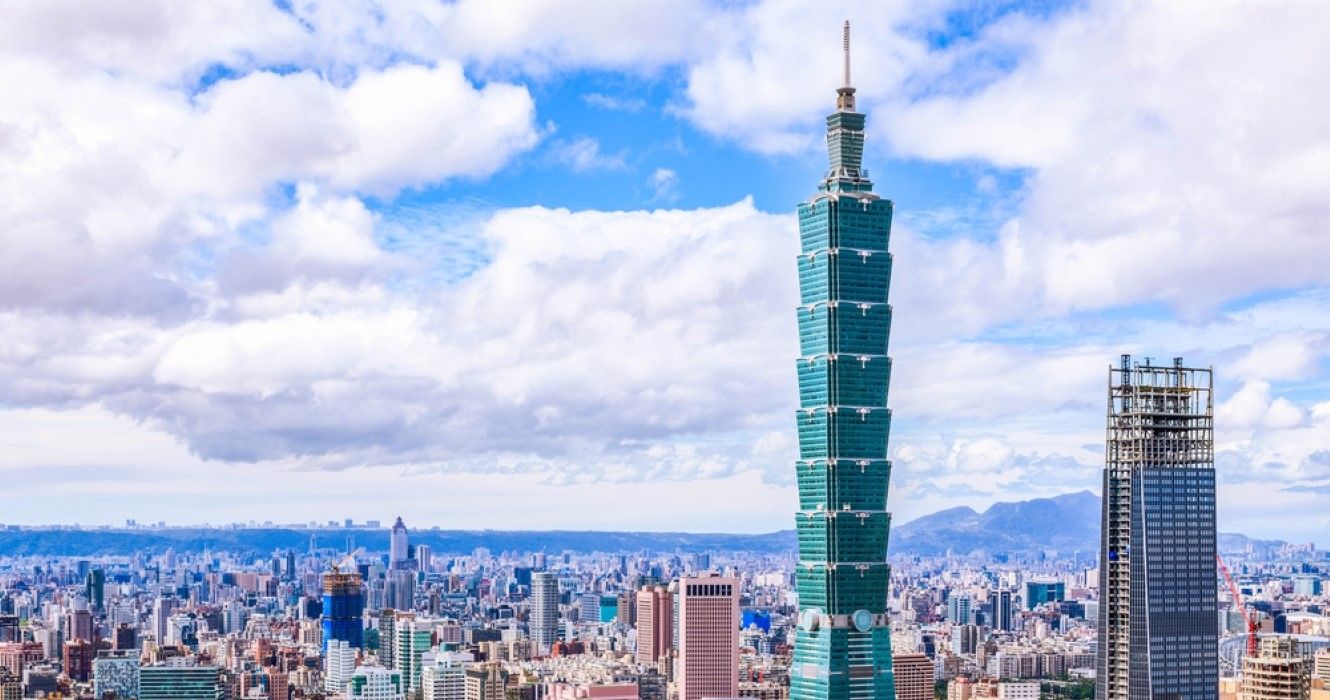Quick Links
There’s a reason the Portuguese who first reached Taiwan called it “Formosa.” In Portuguese, “Formosa” means beautiful. Even today, everyone who’s vacationed in Taiwan would agree with that original description. And while much of this beauty is evenly spread out, Taiwan’s capital Taipei still holds much of the allure that the whole country magically exhibits. It has an efficient transport system, delectable cuisine at the famous night markets, centuries-old temples—and the sky-grazing Taipei 101—the focus of this article.
One of the things that make Taipei 101 an architectural marvel is how it keeps steady in high winds. Thanks to this masterpiece of architectural ingenuity—surprisingly visible to travelers—this building can literally hold its head amidst the strong winds that both country and capital are sometimes known for. In this article, we reveal what keeps Taiwan’s tallest building from swaying. We’ll also show travelers how to see this piece of scientific genius.
Here’s What Keeps Skyscrapers Like Taipei 101 From Swaying
Hitherto the tallest building in the world, of course, before Dubai’s Burj Khalifa came and spoilt the party, Taipei 101 is a neck-straining structure for its height. It climbs to a dizzying 508.2 meters. That’s more than half a kilometer. With that height comes issues to do with structural stability. Two factors pose a significant structural risk. The first is gravity, whose effect is vertical. The other is wind, whose effect, unlike that of gravity, is horizontal. This may come as a surprise, but most tall buildings actually sway in the wind. It’s something similar to the rustling of a tree branch in the face of a stormy gale. Super tall structures like the Burj Khalifa can even move by up to two meters. Obviously, depending on the height of a building, its swaying against the wind must be controlled.
This is what most engineers do: They just firm up their structures through tighter connections, especially at points where the horizontal beams attach to vertical columns. However, in some situations, particularly for structures that are a bit taller, this firming up won’t do. Instead, engineers construct strong cores through the mid-sections, usually involving steel trusses augmented with diagonal beams. That’s how structures like the Chrysler Building hold the wind in check. It’s like making the whole building an inseparable whole. Should there be vibrations, the entire structure is affected in almost equal measure—and not just some parts. But even this innovation can only go so far. In strong winds, unfastened furniture and other items can be seriously damaged.
This brings us to what Taipei 101 uses to keep the wind in check.
How Taipei 101 Uses Its Damper To Stabilize Itself In The Wind
Taipei 101 uses tunned dampers to keep itself steady in the sometimes gusty wind that furiously sweeps across Taiwan. Also known as a harmonic absorber, a damper is an apparatus fixed in various structures mainly to limit or reduce mechanical vibrations. Dampers work differently in different structures. But this is how dampers work in buildings. When used in buildings, dampers are basically huge concrete blocks. Sometimes they are not made of concrete but steel or some other metal. These massive blocks are designed to move in the opposite direction to which the building sways to. And that’s how Taipei 101, one of the tallest in the world, maintains its regal posture.
So when Taipei 101 sways to the left by some two or three feet as a result of some strong wind, its tunned mass damper will move to the right: The opposite direction. This has an overall canceling effect so that the building is not entirely reduced to a reed in the wind. Buildings in the United States that have dampers include One Rincon Hill South Tower in San Francisco as well as Citigroup Center and Trump World Tower—both of which are in New York.
Why Taipei 101’s Damper Is Unique
Here’s the reason. Normally, the dampers of most buildings are cannot be seen. Even in Taipei 101, there are dampers in the tower’s tip—that are hidden away from sight. However, Taipei 101’s main damper is available for visitors to see. Actually, it’s one of the reasons people visit Taiwan’s tallest building. And it was not some afterthought. Designers purposefully made it visible. Today, the world’s most famous damper can be seen from all five floors that it moves past. As a mark of its fame and popularity, Taipei 101’s damper even has its own mascot. It’s called Damper Baby.
- How Can I See Taipei 101’s Damper? Taipei 101’s damper can be seen on the 88th floor of the building. Visitors will need about $19 (NT$600).
The damper is a huge yellow ball suspended from eight steel cables—and is a mind-boggling 728 tonnes in weight. By all accounts, Taipei 101’s damper is worth seeing. And the all-around views—from the building’s pinnacle—will be an added bonus.

